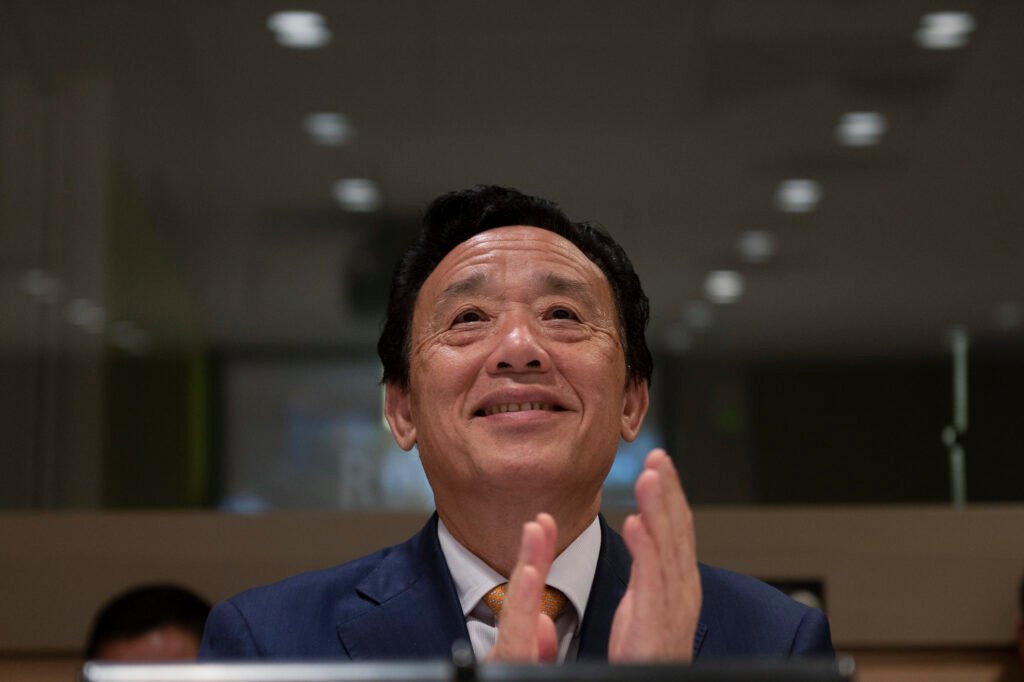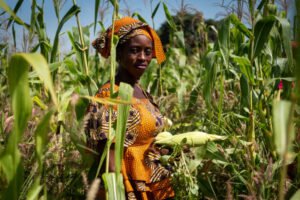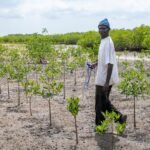FAO Director-General QU Dongyu, claps after watching a presentation on a screen during the FAO’s event “Financing for Sustainable and Inclusive Agrifood systems and Food Crises Prevention and Mitigation” on the sidelines of The High-level Political Forum on Sustainable Development (HLPF). Photo Credit: FAO
By Murimi Gitari, July 12, 2023, FAO Director-General QU Dongyu has said that governments should rethink how they can allocate their existing public budgets to make them more cost-effective and efficient in reducing the cost of nutritious foods, and increasing the availability, accessibility and affordability of healthy diets.
The Director-General said this during a side event held on the margins of the United Nations High-Level Political Forum on Sustainable Development (10-19 July).
Qu opened the high-level event titled “Financing for Sustainable and Inclusive Agrifood Systems and Food Crises Prevention and Mitigation,” organized by FAO with the support of the Governments of Brazil and Pakistan, which took place at the United Nations headquarters in New York on Monday.
The event also saw the participation of among others Rabab Fatima, Under-Secretary-General, UN High Representative for the Least Developed Countries, Landlocked Developing Countries and Small Island Developing States; Navid Hanif, Assistant Secretary-General for Economic Development, Department of Economic and Social Affairs; Lesley Ndlovu, CEO, African Risk Capacity via video message; Munir Akram, Permanent Representative of Pakistan to the UN; Norberto Moretti, Deputy Permanent Representative of Brazil to the UN; and Anne Dostert, Deputy Permanent Representative of Luxembourg to the UN.
The participants discussed how targeted financing can help countries face a series of ongoing, often overlapping shocks, including the impacts of the COVID-19 pandemic, climate extremes, conflicts and the war in Ukraine, which have caused unprecedented supply chain disruptions, followed by a decrease of purchase power, and rising food, fuel and fertilizer prices.
In fact, higher prices have increased the global food import bill to an estimated all-time high, surpassing $1.94 trillion, further stressing the balance of payments and increasing debt burdens, especially for net-importers of food.
The participants touched upon the need to provide the enhanced support to the most vulnerable countries whose resources and budgets are under serous constraints ensuring that they have financial tools and safety nets especially at times of shocks (climate, economic, conflict and other unexpected factors) that result in higher prices.
They also agreed that global agrifood systems needed to be urgently transformed through effective policies, targeted investments and strengthened institutions. These actions are crucial since they are key to creating the conditions for an inclusive and sustainable transformation of economies and societies, and to achieving the Sustainable Development Goals (SDGs) by 2030.
Agrifood systems account for one-third of global GDP, with shares reaching 50 percent or higher in many low-income countries with 80 percent of the global poor living in rural areas whose livelihoods, directly or indirectly, depend on agrifood systems. In Asia and Africa, for example, agrifood systems account for 40 to 60 percent of total employment respectively.
Agrifood systems transformation: key requirements
In his presentation, the FAO Director-General stressed that a sustainable economic future is not possible without increasing the efficiency, inclusivity, resilience and sustainability of agrifood systems. Qu outlined the key requirements for this purpose, which include meeting the increased demand for food, while reducing the pressure on natural resources; reducing greenhouse gas emissions; increased resilience to the impacts of the climate crisis; and ensuring decent employment.
Currently, agrifood systems use 60 percent of the world’s ecosystems, while agriculture generates around a quarter of anthropogenic greenhouse gas emissions, and contribute to biodiversity loss.
To this end, Qu noted that making such dramatic transformations would be a challenging task against a backdrop of weakened financial systems and limited fiscal space. He emphasized the need for mobilizing resources and increasing investment for the required changes as an effective strategy to alleviate poverty, fight hunger, boost productivity, tackle gender inequalities, adapt to and mitigate climate change, and accelerate structural transformation.
According to the FAO Director-General, there is enough evidence to suggest that reforming the way resources are allocated is as essential as increasing them. Therefore, realigning of agriculture support plays a central role in sustaining public goods and services and improving nutrition.
Re-balancing humanitarian and emergency funding
In his address, the Director-General also spoke about the importance of re-balancing humanitarian and emergency funding in crises and emergencies and the need to implement the nexus framework.
International development finance will be needed for countries with low public budgets, he added, which will be key to ease the transition towards higher general services support to effectively bridge productivity gaps in the production of nutritious foods.
To support countries to shoulder the soaring costs of food imports and improve access to food, FAO proposed a Global Food Import Financing Facility that covered 62 countries with a total population of 1.78 billion people, and which was later adopted by the International Monetary Fund as part of its Food Shock Window.
Qu reaffirmed FAO’s commitment to support its Members to explore innovative approaches and strategies that integrate mitigation and prevention of food crises, and the transformation of agrifood systems.
Realigning of agricultural support
FAO Chief Economist Maximo Torero also spoke in the event. He highlighted that the current level of finance to agrifood systems was insufficient and in many cases inefficient, citing as an example the situation in sub-Saharan Africa where three out of four agri-small and mid-size enterprises lack sufficient access to finance.
With proper targeting and the right structural changes, transforming agrifood systems will cost $4 trillion from now to 2030 in low- and middle-income countries, or $680 billion per year which comprises a mix of investments ($426 billion) and the cost of social safety net ($255 billion), Torero said.
Noting that agricultural support and subsidies are linked to unsustainable use of resources and trade distortions and favor short-term perspective, Torero highlighted the need for realigning current support to agriculture towards inclusivity and sustainability, including sustainable use of water.







